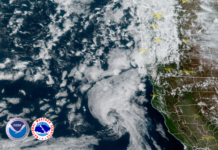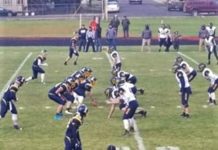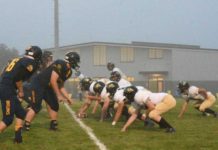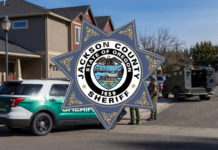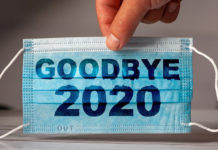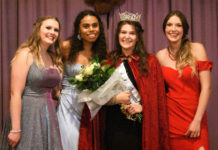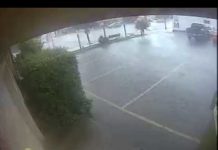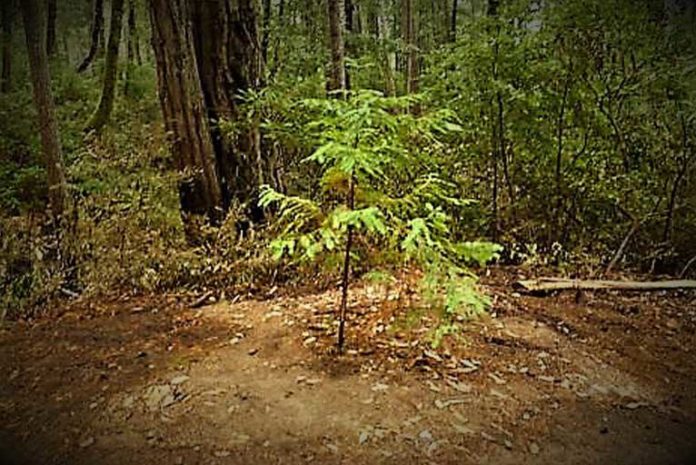The Peace Tree marks the site of the first airstrike ever made on the continental United States. On September 9, 1942, a Japanese submarine surfaced before dawn off the California coast and catapulted two Japanese naval pilots from its deck in a tiny, bomb-laden float plane. Their mission was to drop incendiary bombs on Mt. Emily about 20 miles inland from Brookings. The Japanese hoped the bombs would spark large fires that would drain manpower from U.S. military operations elsewhere in the Pacific.

A lookout near Mount Emily heard the Japanese plane, which he said sounded “like a Model A Ford, backfiring in the distance,” and later reported a small smoke column in the area. Four firefighters were dispatched to the scene and extinguished the fire the same day. The firefighters would recover steel and thermite shards from the bomb.
In 1962, the Japanese Navy pilot, Nobuo Fujita, was invited to Brookings, and it was only after the Japanese government was assured that Mr. Fujita would not be tried as a war criminal, that Fujita made the trip from Japan to Brookings.
During that trip, Mr. Fujita would present his family’s priceless 400-year-old Samurai sword to the city as a gesture of peace. Generations of Fujita’s ancestors had carried the sword into battle and it had flown on the plane with Fujita himself on his many missions during the war.
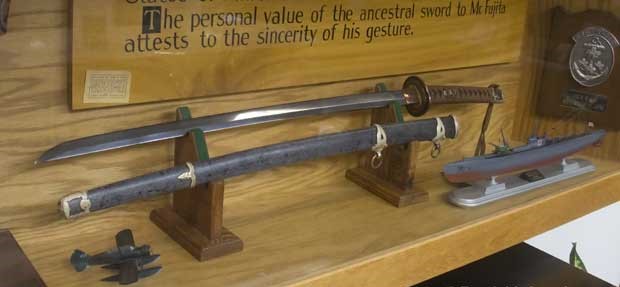
His daughter, Yoriko Asakura, later revealed in an interview that Mr. Fujita was ashamed of his actions during the war and that he had intended to use the sword to commit seppuku if he were given a hostile reception on his trip to the United States. However, although his visit still raised some controversy, the town treated him with respect and affection.
Impressed by his welcome in the United States, Fujita invited three female students from Brookings to Japan in 1985. During this visit, the Brookings-Harbor High School students would present Mr. Fujita a dedicatory letter from an aide to the President of the United States, Ronald Reagan, “with admiration for your kindness and generosity.”
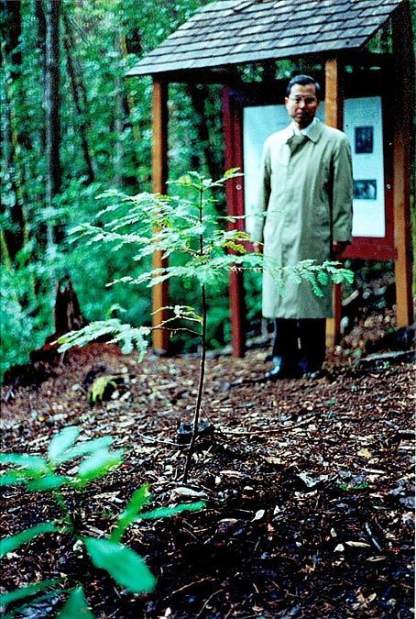
Fujita returned to Brookings in 1990, 1992, and 1995. In 1992, he planted a tree at the bomb site as a gesture of peace, and during his visit in 1995, he moved the samurai sword from the Brookings City Hall into the new library’s display case.
Mr. Nobuo Fujita would be made an honorary citizen of Brookings several days before his death at a hospital in Tsuchiura, Japan, exactly 30 years ago today on September 30, 1997, at the age of 85.
In October 1998, his daughter, Yoriko Asakura, buried some of Fujita’s ashes at the bomb site.
Ironically almost 75 years later, it would a lightning strike from Mother Nature herself that would start the fire that would blacken almost 195,000 acres reaching the same area on Mt. Emily that Mr. Fujita was ordered to target on September 9th, 1942.
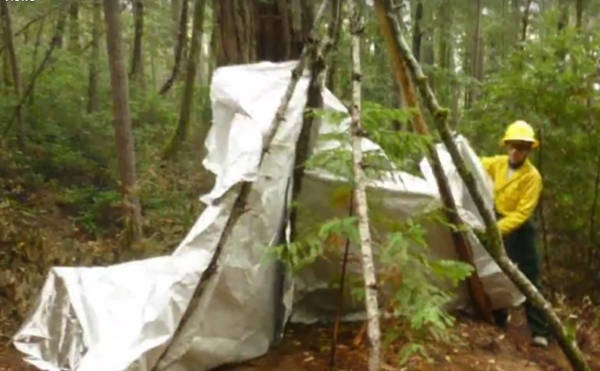
Wrapped carefully by firefighters in sheets of fire-resistant material, the redwood sapling planted by the Japanese Navy Pilot in 1992 at the Mt. Emily bomb site survived the Chetco Bar Fire unscathed.
The two interpretative signs near the trailhead, as well as the four signs at the overlook to the site, were also wrapped ahead of the fire’s arrival, and also survived.
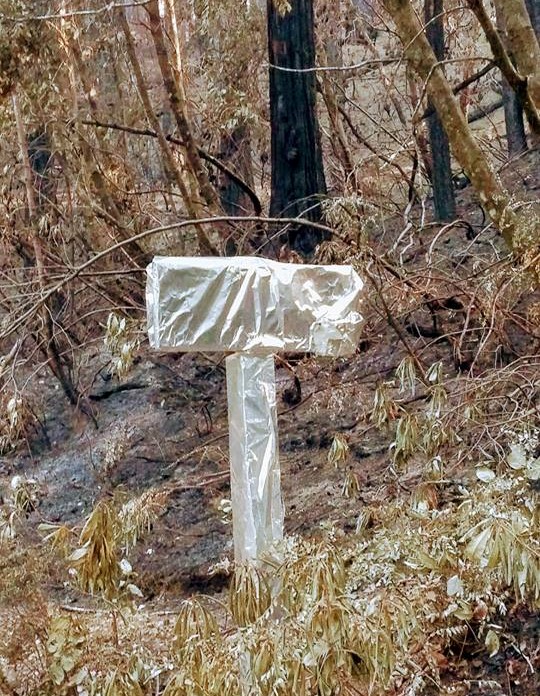 But when visitors return to the site, they will notice that the first half of the trail, which is less than a mile in length, was heavily burned.
But when visitors return to the site, they will notice that the first half of the trail, which is less than a mile in length, was heavily burned.
The fire burned less intensely on the rest of the trail, consuming mostly ground fuels and sparing the crowns of trees.
The site, located about 18 miles east of Brookings, won’t be accessible to the public until the closure order put into effect on the Rogue River-Siskiyou National Forest for the fire is rescinded.



